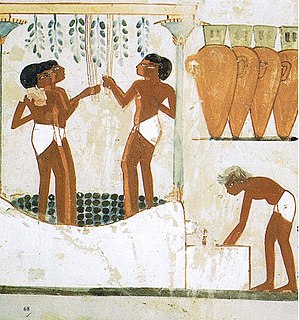
Back الميكروبات في الثقافة الإنسانية Arabic Մանրէները մարդկային մշակույթում HY Interaksi manusia dengan mikroorganisme ID Interazioni umane con i microbi Italian Tương tác của con người với vi sinh vật VI

Human interactions with microbes include both practical and symbolic uses of microbes, and negative interactions in the form of human, domestic animal, and crop diseases.
Practical use of microbes began in ancient times with fermentation in food processing; bread, beer and wine have been produced by yeasts from the dawn of civilisation, such as in ancient Egypt. More recently, microbes have been used in activities from biological warfare to the production of chemicals by fermentation, as industrial chemists discover how to manufacture a widening variety of organic chemicals including enzymes and bioactive molecules such as hormones and competitive inhibitors for use as medicines. Fermentation is used, too, to produce substitutes for fossil fuels in forms such as ethanol and methane; fuels may also be produced by algae. Anaerobic microorganisms are important in sewage treatment. In scientific research, yeasts and the bacterium Escherichia coli serve as model organisms especially in genetics and related fields.
On the symbolic side, an early poem about brewing is the Sumerian "Hymn to Ninkasi", from 1800 BC. In the Middle Ages, Giovanni Boccaccio's The Decameron and Geoffrey Chaucer's The Canterbury Tales: addressed people's fear of deadly contagion and the moral decline that could result. Novelists have exploited the apocalyptic possibilities of pandemics from Mary Shelley's 1826 The Last Man and Jack London's 1912 The Scarlet Plague onwards. Hilaire Belloc wrote a humorous poem to "The Microbe" in 1912. Dramatic plagues and mass infection have formed the story lines of many Hollywood films, starting with Nosferatu in 1922. In 1971, The Andromeda Strain told the tale of an extraterrestrial microbe threatening life on Earth. Microbiologists since Alexander Fleming have used coloured or fluorescing colonies of bacteria to create miniature artworks.
Microorganisms such as bacteria and viruses are important as pathogens, causing disease to humans, crop plants, and domestic animals.